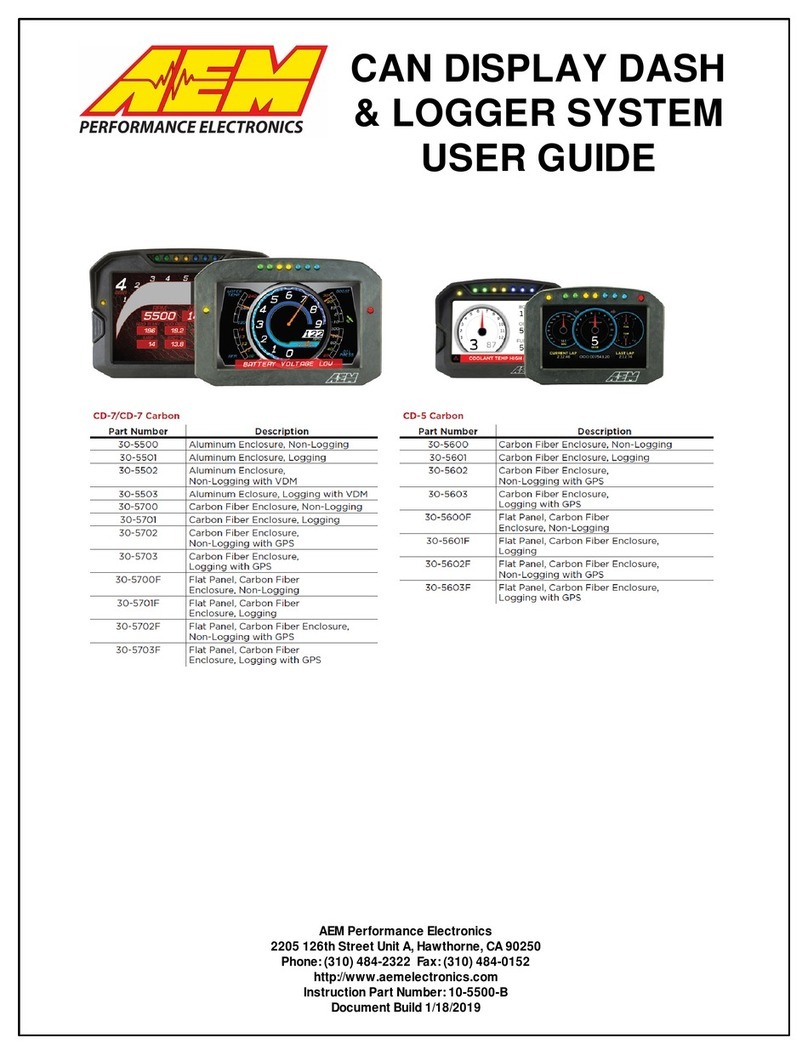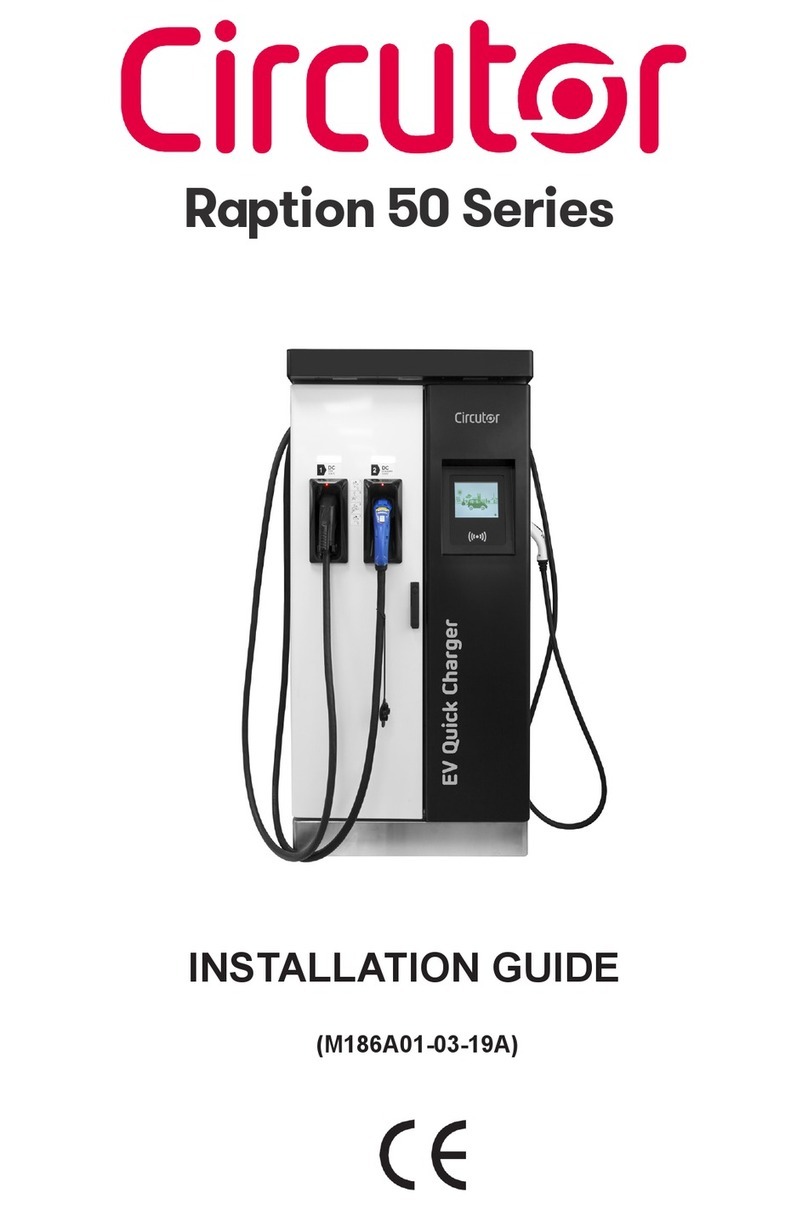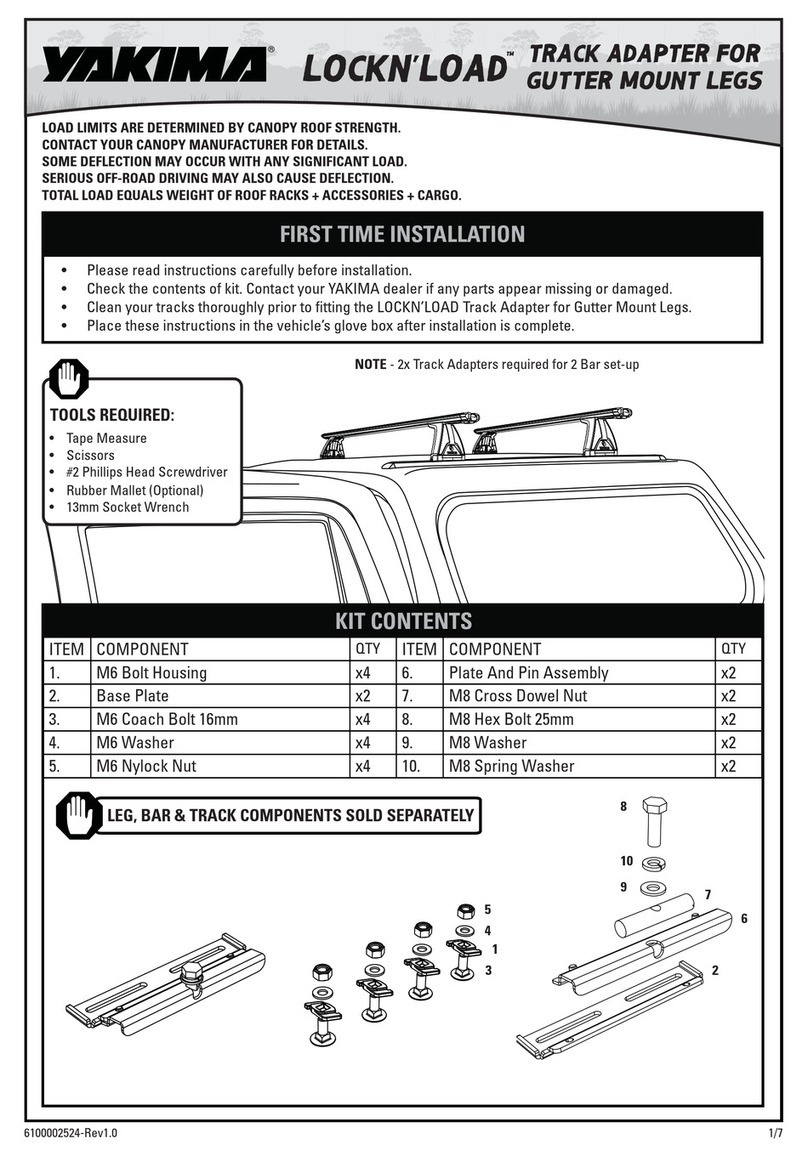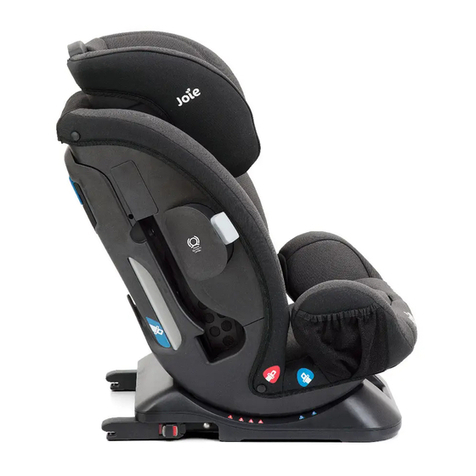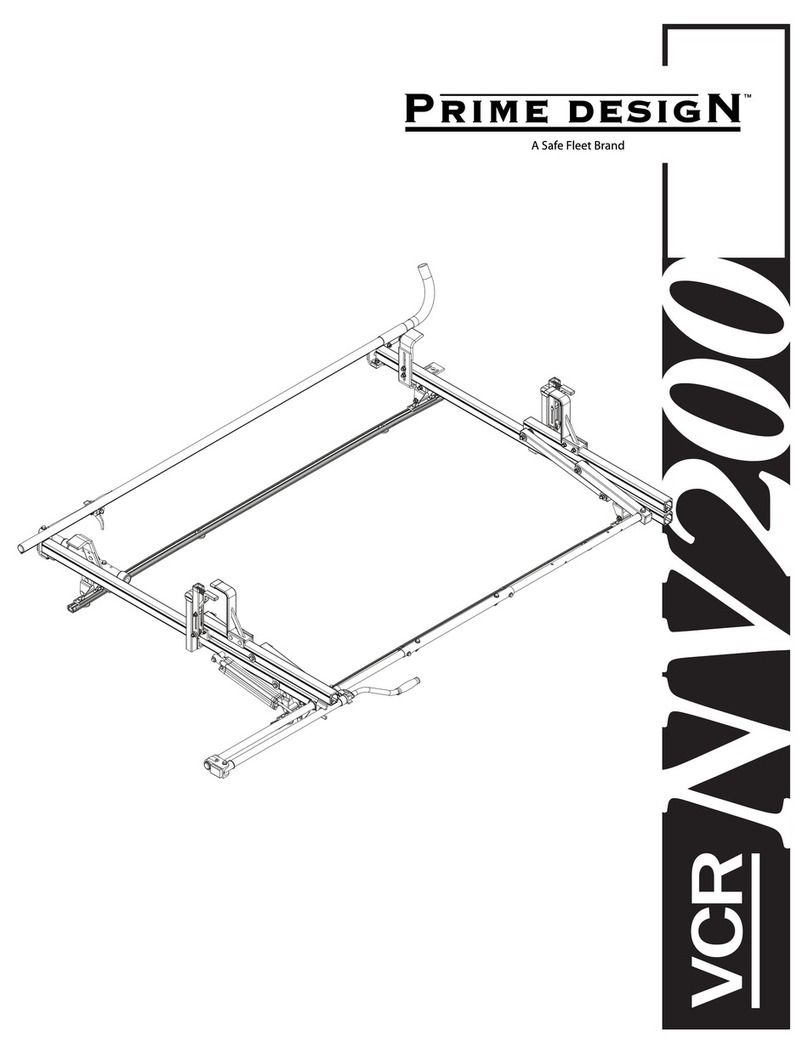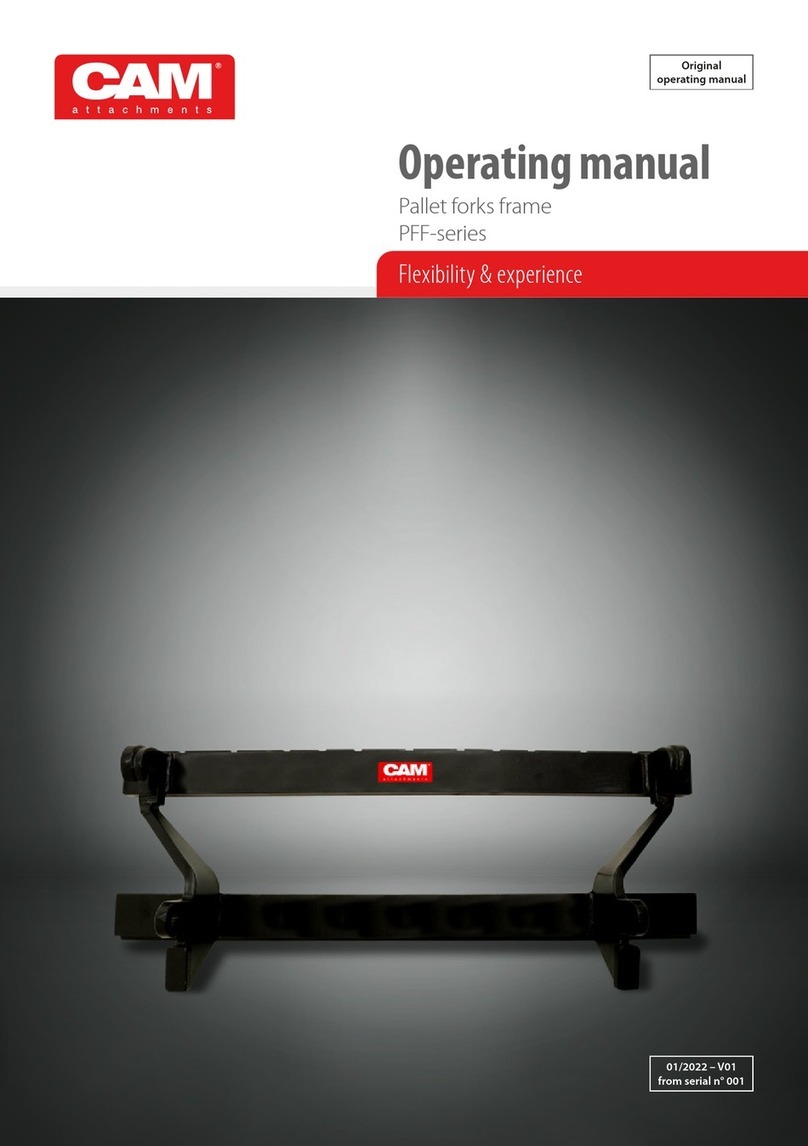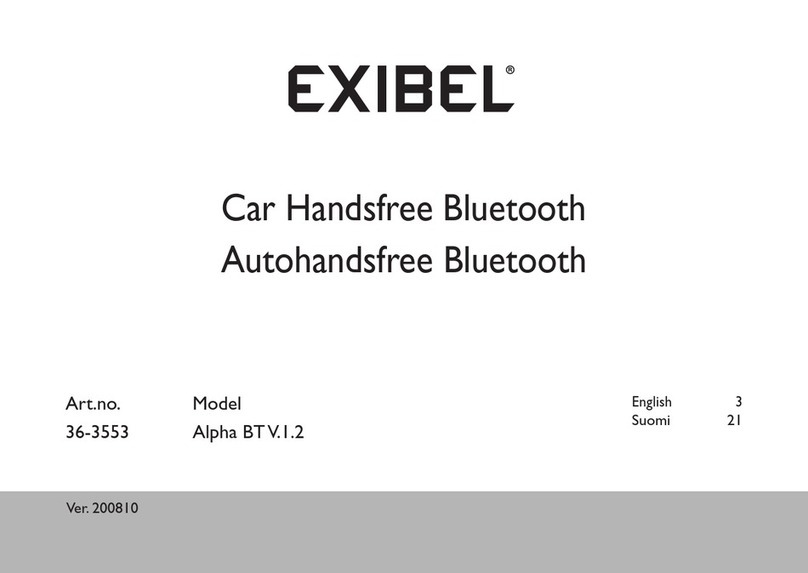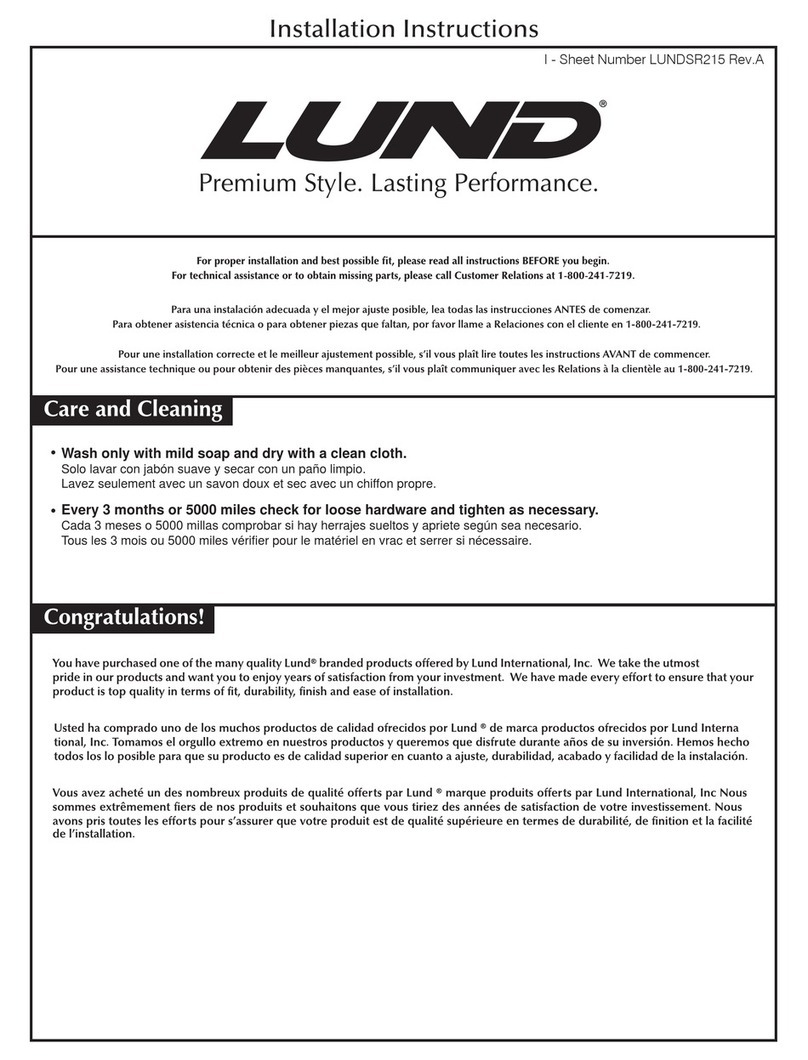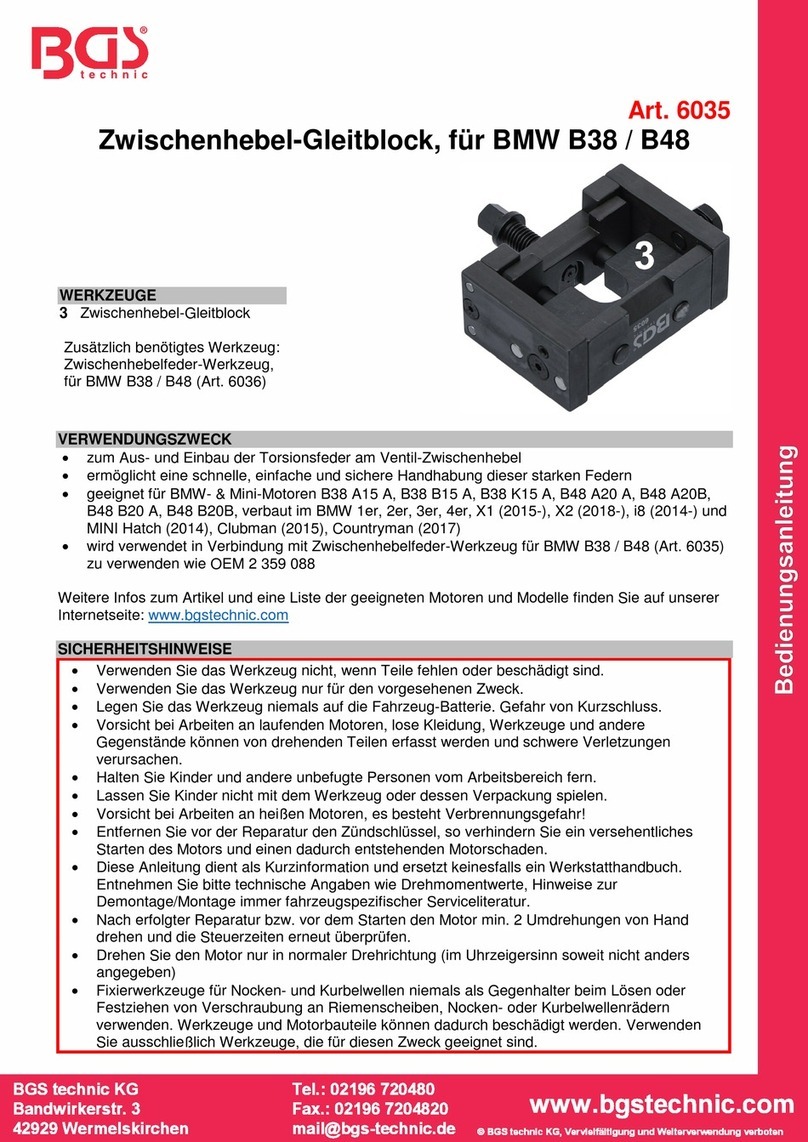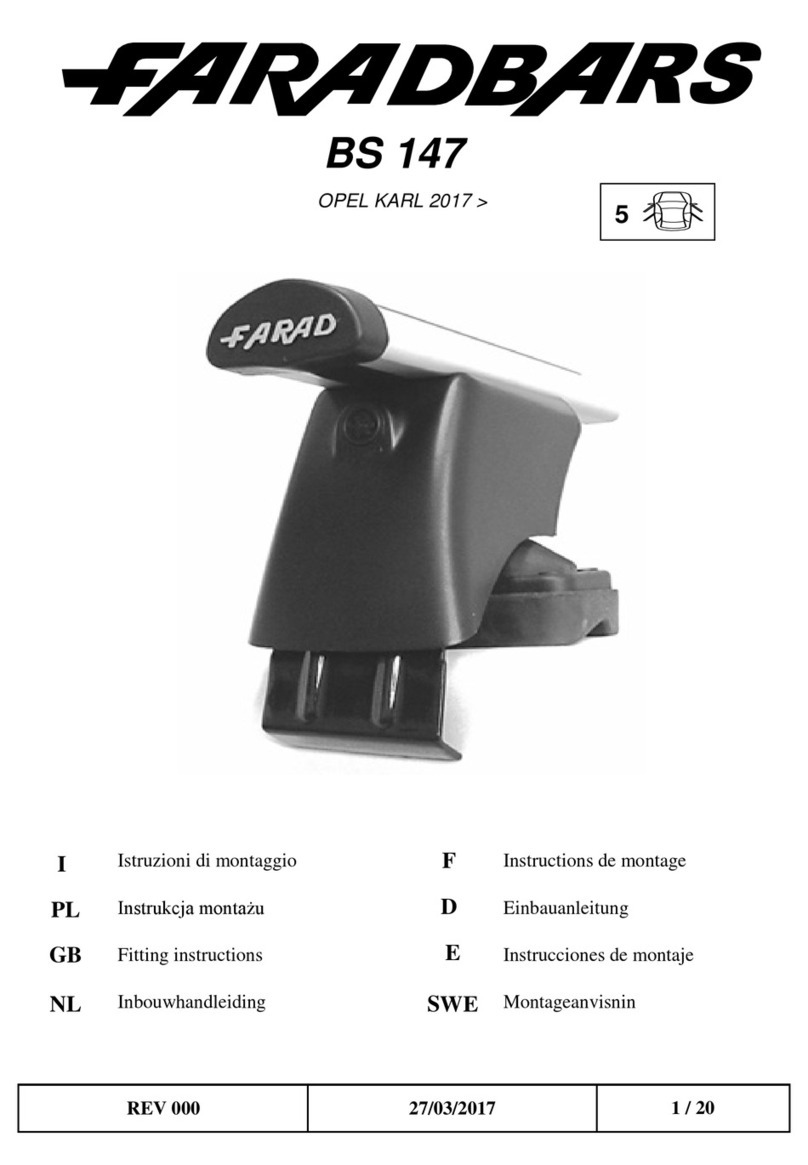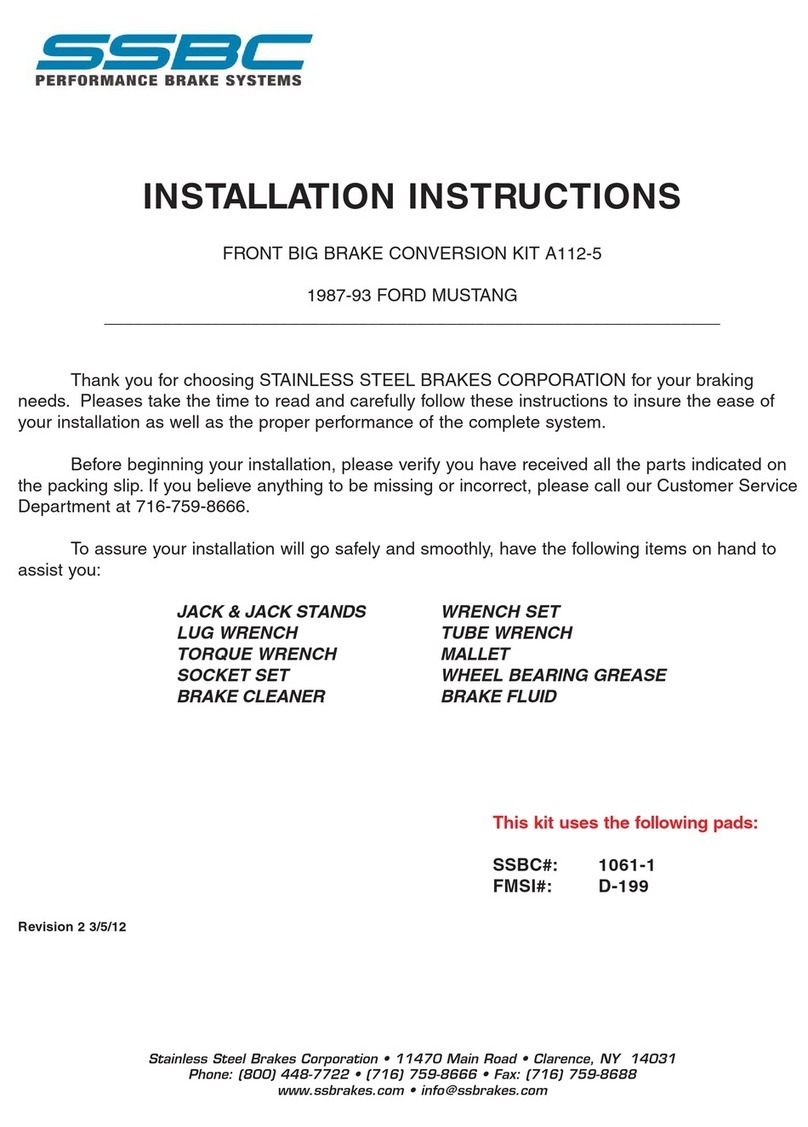AEM Performance Electronics 30-6053 Series User manual

30-6053
Series 2 Plug & Play EMS
2006–2008 Honda S2000 AP2 F22C1
AEM Performance Electronics
AEM Performance Electronics, 2205 126th Street Unit A, Hawthorne, CA90250
Phone: (310) 484-2322 Fax: (310) 484-0152
http://www.aemelectronics.com
Instruction Part Number: 10-6053
Document Build 1/21/2021
Instruction
Manual
Enter value
WARNING!
Improper installation and/or adjustment of this product can result in major engine/vehicle damage. For
technical assistance visit our dealer locator to find a professional installer/tuner near you.
Note: AEM holds no responsibility for any engine damage or personal injury that results from the misuse
of this product, including but not limited to injury or death caused by the mishandling of methanol.
STOP!
THIS PRODUCT HAS LEGAL RESTRICTIONS.
READ THIS BEFORE INSTALLING/USING!
WARNING! THIS IS A RACE ONLY PRODUCT MANUFACTURED AND SOLD FOR INSTALLATION ON VEHICLES DESIGNED TO BE USED
SOLELY FOR COMPETITION PURPOSES. ONCE THIS PART IS INSTALLED, THE VEHICLE MAY NEVER BE USED, OR REGISTERED
OR LICENSED FOR USE, ON A PUBLIC ROAD OR HIGHWAY. IF YOU INSTALL THIS PART ON YOUR VEHICLE AND USE THE VEHICLE
ON A PUBLIC ROAD OR HIGHWAY, YOU WILL VIOLATE THE CLEAN AIR ACT AND MAY BE SUBJECT TO PERSONAL CIVIL OR
CRIMINAL LIABILITY, INCLUDING FINES OF UP TO $4,819 PER DAY.
IT IS THE RESPONSIBILITY OF THE INSTALLER AND/OR USER OF THIS PRODUCT TO ENSURE THAT IT IS USED IN COMPLIANCE
WITH ALL APPLICABLE LAWS AND REGULATIONS. IF THIS PRODUCT WAS PURCHASED IN ERROR, DO NOT INSTALL AND/OR USE
IT. THE PURCHASER MUST ARRANGE TO RETURN THE PRODUCT FOR A FULL REFUND.
THIS POLICY ONLY APPLIES TO INSTALLERS AND/OR USERS WHO ARE LOCATED IN THE UNITED STATES; HOWEVER
CUSTOMERS WHO RESIDE IN OTHER COUNTRIES SHOULD ACT IN ACCORDANCE WITH THEIR LOCAL LAWS AND REGULATIONS.

2
© 2021 AEM Performance Electronics
30-6053
OVERVIEW
Thank you for purchasing an AEM Engine Management System.
The AEM Engine Management System (EMS) is the result of extensive development on a wide variety of cars.
Each system is engineered for each particular application. The AEM EMS differs from all others in several ways.
The EMS is a stand alone system which replaces the fuel and ignition functions of the factory ECU and features
unique Plug and Play technology, which means that each system is configured especially for your make and
model of car.
For stock and slightly modified vehicles, the supplied startup calibrations are configured to work with OEM
sensors, providing a solid starting point for beginner tuning. For more heavily modified cars, the EMS can be
reconfigured to utilize aftermarket sensors and has many spare inputs and outputs allowing the elimination of add-
on rev-limiters, boost controllers, nitrous controllers, fuel computers, etc. It also includes a configurable onboard
1MB data logger that can record any 16 EMS parameters at up to 250 samples per second. Every EMS comes
with all functions installed and activated; there is no need to purchase options or upgrades to unlock the full
potential of your unit.
The installation of the AEM EMS on the supported vehicles uses the stock sensors and actuators. After installing
the AEMTuner software, the startup calibration will be saved to the following folder on your PC: C:\Program
Files\AEM\AEMTuner\Calibrations\Honda - Acura\
Multiple calibrations may be supplied for each EMS; additional details of the test vehicle used to generate each
calibration can be found in the Calibration Notes section for that file.
Please visit the AEM Performance Electronics Forum at http://www.aemelectronics.com and register. We always
post the most current strategy release, PC Software and startup calibrations online. On the forum, you can find
and share many helpful hints/tips to make your EMS perform its best.
TUNING NOTES
While the supplied startup calibration may be a good starting point and can save considerable time and money, it
will not replace the need to tune the EMS for your specific application. AEM startup calibrations are not intended
to be driven aggressively before tuning. We strongly recommend that every EMS be tuned by someone who is
already familiar with the AEM software and has successfully tuned vehicles using an AEM EMS. Most people
make mistakes as part of the learning process; be warned that using your vehicle as a learning platform can
damage your engine, your vehicle, and your EMS.

Series 2 Plug & Play EMS 3
© 2021 AEM Performance Electronics
INSTALLATION
**Read and understand these instructions BEFORE attempting to install this product.**
Sufficient Battery Voltage During Cranking (Starting)
Having enough battery voltage when you crank over your vehicle is critical to the operation of your vehicle and
your AEM EMS. For the EMS to function properly, the battery voltage must remain at or above 8 Volts when the
vehicle is first starting. This is the time when your electrical system will be worked its hardest and be at its lowest
voltage. If you are connected to your Series 2 EMS with a USB communications cable and you experience
disconnecting while the vehicle is cranking, the reason is most likely a battery voltage of less than 8 Volts. (See
the Channel called “Battery Raw” which is an unfiltered value of actual battery voltage being received by the
EMS.) If this is the case, you can confirm this by connecting with a serial cable (a serial adapter may be required
if your computer is not equipped with a serial port) and checking in the AEMTuner software for a Channel called
“Run Time,” as well as “Battery Raw,” to see at what voltage the EMS cuts out. “Run Time” is the amount of time,
in seconds, that the EMS has been turned on for. If you notice that this Channel resets to zero while the EMS is
communicating with the computer and the vehicle is being cranked, that means the EMS has had lower than 8
Volts at some point and has reset the system. A thorough wiring check may reveal a large voltage drop causing
this problem, or it may simply be the need for a new or a larger battery.
AEM Adapter Harness
The 2006–2008 Honda S2000 uses an electronically controlled throttle which will remain controlled by the original
ECU. The adapter harness provided will allow the user to retain the original electronically controlled throttle while
still being able to control all other engine management aspects that you have come to expect from AEM. In
addition, the stock instrument cluster, air conditioning, and emissions controls will continue to work as normal,
controlled by the original Honda ECU.
Vehicle Speed Sensor
Currently, the speed sensor is the only circuit that causes a check engine light. This will not affect the function of
the electronically controlled throttle.
Engine Wiring Harnesses & ‘Swapped’ Engine Installations
It would be very wise to double-check that the pinout destinations for the circuits is accurate to the provided
documentation. This is especially true if the vehicle contains a ‘swapped’ engine or if the wiring harness has been
cut, spliced, soldered, tapped or modified in any manner. It is the user’s responsibility to check that the wiring on
the vehicle matches the pinout chart in this document. AEM will not be held responsible for loss or damage that
can occur if the EMS is installed in a vehicle in which the wiring harness does not match the AEM-supplied pinout
chart!
Retaining Original O2 Sensor
For the malfunction code for this sensor to remain off, the stock oxygen sensor must be retained. However, when
the air-fuel ratio is too rich with this sensor, in the case of a turbo application, the check engine light will still come
on. This will not have any affect on the operation of the car including the electronically controlled throttle.
Knock Sensor
In the AEM wiring harness, the stock knock sensor has been tapped rather than intercepted to keep the stock
ECU from thinking it has a malfunction. The knock sensor is less sensitive but still functional and the calibration for
the sensor is lower by 0.3 Volts in the AEMTuner calibration. If you would like the knock sensor to be more
sensitive, you can depin Pin A1 that goes into the stock ECU, but the malfunction code for this sensor will turn on.
If this is done, the knock sensor calibration will need to have 0.3 Volts added to each breakpoint in the calibration.
Traction Control Function
When active, the stock traction control system will be affected by adding the EMS. The stock traction control
system uses throttle, fuel, and ignition changes for the traction control system. Since the fuel and ignition are no
longer controlled by the stock ECU, these aspects of traction control must now be configured in the calibration in
the EMS. The throttle will still be cut as normal, but the traction and stability control warning lights will stay on after
the system is no longer activated and will reset when the vehicle is turned off.

4
© 2021 AEM Performance Electronics
30-6053
EMS Fuel Map & Boost Fuel Trim Table
The 30-6053 calibration maps provided utilize the “Boost Fuel Trim Table” to provide a 1:1 fuel compensation
above atmospheric pressure. However, since the calibration was created on a naturally aspirated vehicle (a
calibration is provided above 100 kPa), it has not been tested in boost and must be tuned to your application if
turbo or supercharged. To use this table, the Boost Fuel Trim Table should be configured to provide twice as
much fuel when the manifold pressure is twice as high and half the fuel when the manifold pressure is half as
high; this should help simplify the tuning process for different vacuum and boost levels. Notice the values in the
main Fuel Map do not change above 100 kPa (0 psi boost); the fuel correction is being made by the Boost Fuel
Trim Table.
Note: The Boost Fuel Trim Table must be adjusted if a different MAP sensor is installed or if the Load breakpoints
are adjusted. The Boost Fuel Trim value should be set to -90 at 10kPa, 0 at 100 kPa, +100 at 200 kPa, +200 at
300 kPa, etc.
Wiring Accessories to the EMS
Please follow this suggested wiring diagram when adding new accessories and retaining original accessories
such as UEGO gauges, MAP sensors, MAF sensors, IAT sensors, or switches for use with the EMS. Note that
wire polarity is not important for the Air Temperature sensor.

Series 2 Plug & Play EMS 5
© 2021 AEM Performance Electronics
Step 1
Install AEMTuner Software onto your PC
The latest version of the AEMTuner software can be downloaded from the AEMTuner section of the AEM
Performance Electronics forums found at www.aemelectronics.com. Series 2 units are not supported by the older
AEMPro tuning software.
Step 2
Connect AEM Adapter Harness
a) Disconnect negative terminal from battery.
b) Access the stock Engine Control Unit (ECU). The location of the ECU on the Honda S2000 is behind the
left side driver’s side kick panel.
Honda S2000
c) Remove kick panel that covers the original ECU and the plastic cover on the lower driver’s side door sill.
The door sill cover is held in with plastic clips as shown below.
Remove sill cover
Clips holding sill cover

6
© 2021 AEM Performance Electronics
30-6053
d) Remove the clip that is hidden underneath the rubber sealing trim next to the dashboard and the clip for the
plastic cover over the stock ECU using a plastic pry tool to avoid scratching the paint and plastic cover.
Remove clip
Remove clip
e) Remove the carpeting that runs along the lower driver’s side door sill to place the wiring harness provided.
Next, remove the two screws holding the plastic cover behind the driver’s seat to place the EMS in the area
behind the seat.
Remove carpet covering harness
Remove screw holding plastic cover
f) Tap pin 3 on the red/blue TPS wire on the stock wiring harness using the provided wire-tap. It is located on
the white 6-pin connector near the stock ECU shown below.
Tap pin 3 (red/blue wire) on 6-pin
connector

Series 2 Plug & Play EMS 7
© 2021 AEM Performance Electronics
g) How to use provided wire taps:
Run harness TPS wire through
Place vehicle wire in tap
Screw in tap onto vehicle wire
Place harness TPS wire as shown
Screw TPS wire into tap
h) Carefully disconnect the wiring harness from the ECU. Avoid excessive stress or pulling on the wires, as
this may damage the wiring harness. All connectors must be removed without damage to work properly with
the AEM ECU. Do not cut any of the wires in the factory wiring harness to remove them. Next to the stock
ECU on the stock wiring harness, the A and B connectors should be routed underneath the D and E
connectors to make them easier to install.
Carefully remove ECU connectors
Reroute connectors

8
© 2021 AEM Performance Electronics
30-6053
i) Connect provided adapter harness to factory wiring harness and stock ECU. Then route the harness from
the stock ECU through the driver’s side door sill and underneath the driver’s side seat. Take note of the
bends that the harness will require so that the plastic cover that protects the harness will fit over the AEM
wiring harness. A few zip ties will hold the harness against the stock ECU so that the clutch pedal will not
contact it. See photo above to get an idea of the stock clearance of the ECU and clutch pedal.
Plug in adapter harness to stock wiring
Plug in adapter harness to stock ECU
j) Mount the AEM EMS behind the seat in the upright position to maximize seat adjustment using the Velcro
strips provided. Make sure the EMS is not impacted by the seat when moving it back into place.
EMS location
k) Reinstall the covers in the reverse of removal. Make sure that the cover that goes over the original ECU and
now the adapter harness fits so that it is not contacting the clutch pedal.

Series 2 Plug & Play EMS 9
© 2021 AEM Performance Electronics
Step 3
Repin ECU Pins (Only Necessary if Adding or Relocating ECU Pins)
a) Locate a small screwdriver (a precision 1.5mm wide flathead screwdriver is recommended) and carefully
pry white plastic retainer using both slots in the retainer so it disengages vertically about 1mm as shown in
the following pictures:
Screwdriver lifts here
Plastic retaining mechanism after lifting
b) Next remove the metal pin from the plastic connector by lightly prying on the plastic tabs that secure the
metal pin in the plastic connector while pulling on the wire at the same time as shown below.
Pry this tab up to release the pin
While prying tab up, gently pull pin back
Step 4
Install the AEM Engine Management System
a) Plug the provided wiring harness into the AEM EMS and position it so the wires are not pulled tight or
stressed in any manner.
b) Secure the EMS with the provided Velcro fasteners behind driver’s side seat.
c) Reconnect the negative battery terminal.
d) Plug the communications cable into the EMS and into your PC.
e) Turn the ignition on, but do not attempt to start the engine.
f) At the time these instructions were written, new EMS units do not require USB drivers to be installed on the
PC. The EMS will automatically be detected as a human interface device (HID).
g) With the AEMTuner software open, select ECU>>Upload Calibration to upload the startup calibration file
(.cal) that most closely matches the vehicle’s configuration to be tuned. Check the Notes section of the
calibration for more info about the vehicle it was configured for. These files can be found in the following
folder: C:\Program Files\AEM\AEMTuner\Calibrations\Honda - Acura\

10
© 2021 AEM Performance Electronics
30-6053
h) NOTE: The throttle range on this vehicle is set differently from other EMS applications! Disconnect the
DBW connector on the throttle, then perform the procedure as follows by holding the throttle open and
closed manually at the throttle plate. Set the throttle range: Select Wizards>>Set Throttle Range. When
finished, check that the ‘Throttle’ channel never indicates less than 3.2% or greater than 99.8% (must be
2.2% or more since the DBW throttle will close slightly when the engine starts) – this is considered a
sensor error and may cause some functions including idle feedback and acceleration fuel to operate
incorrectly. Since this application uses the original drive-by-wire system, it is highly recommended that
after calibration is complete, the throttle is rechecked to ensure that the minimum throttle never causes the
Error Throttle channel to turn on. This would happen when the vehicle is off and the key is turned on.
Step 5
Ready to Begin Tuning the Behicle
a) Before starting the engine, verify that the fuel pump runs for a couple of seconds when the key is turned on
and there is sufficient pressure at the fuel rail. If a MAP sensor is installed, check that the Engine Load
indicates something near atmospheric pressure (approximately 101kPa or 0 PSI at sea level) with the key
on and engine off. Press the throttle and verify that the ‘Throttle’ channel responds but the Engine Load
channel continues to measure atmospheric pressure correctly.
b) Start the engine and make whatever adjustments may be needed to sustain a safe and reasonably smooth
idle. Verify the ignition timing: Select Wizards>>Ignition Timing Sync from the pull-down menu. Click the
‘Lock Ignition Timing’ checkbox and set the timing to a safe and convenient value (10 degrees BTDC for
instance). Remove the cylinder 1 ignition coil (closest to front of engine), add a spark plug wire between
the ignition coil and the spark plug, and place the timing light pickup on the added spark plug wire. Use a
timing light to compare the physical timing numbers to the timing value you selected. Use the Sync
Adjustment Increase/Decrease buttons to make the physical reading match the timing number you
selected. Crankshaft timing marks are not labeled for some vehicles. Consult the factory service manual for
more information. The diagram below shows labels for the original timing marks. “A” points to the timing
indicator and “B” points to the red mark that is located 5° before top dead center.
c) Note: This calibration needs to be properly tuned before driving the vehicle. It is intended for racing
vehicles and may not operate smoothly at idle or part-throttle.
NEVER TUNE A VEHICLE WHILE DRIVING.

Series 2 Plug & Play EMS 11
© 2021 AEM Performance Electronics
Step 6
Troubleshooting an Engine that Will Not Start
a) Double-check all the basics first. Engines need air, fuel, compression, and a correctly timed spark event. If
any of these are lacking, we suggest checking simple things first. Depending on the symptoms, it may be
best to inspect fuses, sufficient battery voltage, properly mated wiring connectors, or spark using a timing
light or by removing the spark plug, perform wiring continuity tests, measure ECU pinout voltages, or
replace recently added or untested components with known-good spares. Check that all EMS sensor inputs
measure realistic temperature and/or pressure values.
b) If the EMS is not firing the coils or injectors at all, open the Start tab and look for the ‘Stat Sync’d’ channel
to turn ON when cranking. This indicates that the EMS has detected the expected cam and crank signals; if
Stat Sync’d does not turn on, monitor the Crank Tooth Period and T2PER channels which indicate the time
between pulses on the Crank and T2 (Cam) signals. Both of these channels should respond when the
engine is cranking, if either signal is not being detected or measuring an incorrect number of pulses per
engine cycle the EMS will not fire the coils or injectors.
c) If the Engine Load changes when the throttle is pressed this usually indicates that there is a problem with
the MAP sensor wiring or software calibration. (When the EMS detects that the MAP Volts are above or
below the min/max limits it will run in a failsafe mode using the TPS-to-Load table to generate an artificial
Engine Load signal using the Throttle input.) This may allow the engine to sputter or start but not continue
running properly.

12
© 2021 AEM Performance Electronics
30-6053
APPLICATION NOTES
Description
Function
Pin
Make:
Acura/Honda
Spare Injector Drivers:
Injector 5
D1
Model:
S2000
Spare Injector Drivers:
Injector 6
B19
Years Covered:
2006–2008
Spare Injector Drivers:
Injector 7
D2
Engine Displacement:
2.2L
Spare Injector Drivers:
Injector 8
B16
Engine Configuration:
Inline 4
Spare Injector Drivers:
Injector 9
A12 or A13
Firing Order:
1-3-4-2
Spare Injector Drivers:
Injector 10
C11
N/A, S/C or T/C:
N/A
Spare Injector Drivers:
Injector 11
A14
Load Sensor Type:
MAP
Spare Injector Drivers:
Injector 12
A10
MAP Min:
0.32V @ -13.9 psi
Spare Coil Drivers:
Coil 7
A13*
MAP Max:
4.84V @ 10.94 psi
Spare Coil Drivers:
Coil 8
A22*
# Coils:
4 smart coils with built in ignitors
Boost Solenoid:
PW 2
D16
Ignition Driver Type:
0–5V Falling Edge trigger
Spare PWM Freq Driver:
PW 1
B15 or B23
# of Injectors:
4 (Inj 1–4)
EGT 1 Location:
EGT 1
A5
Factory Injectors:
360 cc/min saturated
EGT 2 Location:
EGT 2
D7
Factory Inj Resistors:
No
EGT 3 Location:
EGT 3
A30
Injection Mode:
Sequential
EGT 4 Location:
EGT 4
C5
Knock Sensors Used:
1 (Knock 1)
Spare 0–5V Input Channel:
ADCR03
A29
Lambda Sensors Used:
1 (O2 # 1, wideband sensor
required, original O2 sensor used
only for original check engine light)
Spare 0–5V Input Channel:
ADCR11
C6
Spare 0–5V Input Channel:
ADCR13
C24
Spare 0–5V Input Channel:
ADCR14
D8
Spare Low Side Output Driver:
Low side 1
A2
Idle Control:
Stock electronic throttle
Spare Low Side Output Driver:
Low side 2
C1
Main Relay Control:
Controlled by stock ECU
Spare Low Side Output Driver:
Low side 4
A6
Crank Pickup Type:
Hall Effect (3-wire)
Spare Low Side Output Driver:
Low side 5
A4
Crank Teeth/Cycle:
24 plus 2
Spare Low Side Output Driver:
Low side 7
A19
Cam Pickup Type:
Hall Effect (3-wire)
Spare Low Side Output Driver:
Low side 10
A18
Cam Teeth/Cycle:
4 plus 1
Spare Low Side Output Driver:
Low side 12
A8
Transmissions Offered:
Manual
Spare Low Side Output Driver:
Idle 2
A28
Trans Supported:
Manual
Spare Low Side Output Driver:
Idle 4
D5
Drive Options:
RWD
Spare Low Side Output Driver:
Idle 6
B17
Supplied Connectors:
N/A
Spare Low Side Output Driver:
Idle 8
B25
AEM Extension/Patch
Harness:
30-2986C (from vehicle harness)
VTEC High Side Driver:
High side 1
B12
Spare High Side Driver:
High side 2
B7
AEM Plug/Pin Kit:
35-2610
Spare High Side Driver:
Idle 1
D3
Spare High Side Driver:
Idle 3
A25
Spare High Side Driver:
Idle 5
B8
Spare High Side Driver:
Idle 7
B18
Spare Switch Input:
Switch 1
A32
Spare Switch Input:
Switch 2
D11
Spare Switch Input:
Switch 3
D12
Spare Switch Input:
Switch 5
C10
A/C Switch Input:
Switch 6
A27
WARNING:
*The Coil 7 and Coil 8 outputs are intended only for use with ignitors (or smart coils with built-in ignitors). Do not connect these
pins directly to 2-wire direct-fire ignition coils (a.k.a. ‘dumb’ coils); doing so will damage your EMS and void your warranty.
All switch input pins must connect to ground, the switch should not provide 12V power to the EMS because that will not be
detected as on or off. Connecting 12V power to the switch input pins may damage your EMS and void your warranty.

Series 2 Plug & Play EMS 13
© 2021 AEM Performance Electronics
PINOUTS
Original Honda S2000 ECU Pinout
This pinout is for the original wiring harness on the Honda S2000 showing the corresponding pin on the
AEM EMS through the adapter harness. Please note: Connector C is not present in the original wiring harness.
Connector A
Pin
Name
AEM EMS
pin location
Tapped or
intercepted?
A1
Knock sensor (Knock 1 on EMS)
C3
tapped
A2
Ignition power 2
--
--
A3
Ignition power 1
--
--
A4
Power ground 2 (Power ground on EMS)
B10
tapped
A5
Power ground 1 (Power ground on EMS)
B2
Relay pins 2 & 4
tapped
A6
Camshaft position sensor (T2 on EMS)
C20
tapped
A7
Crankshaft position sensor (T1 on EMS)
C8
tapped
A8
Logic Ground 2
--
--
A9
Logic Ground 1
--
--
A10
AF sensor heater
--
--
A11
--
--
--
A12
--
--
--
A13
Ignition Coil 4 (Coil 4 on EMS)
C14
intercepted
A14
Ignition Coil 3 (Coil 3 on EMS)
C13
intercepted
A15
Ignition Coil 2 (Coil 2 on EMS)
C12
intercepted
A16
Ignition Coil 1 (Coil 1 on EMS)
C4
intercepted
A17
--
--
--
A18
Vehicle Speed Sensor (T3 on EMS)
C23
tapped
A19
--
--
--
A20
Sensor Voltage 2
--
--
A21
Sensor Voltage 1
--
--
A22
--
--
--
A23
Sensor Ground 2 (Sensor ground on EMS)
C18
tapped
A24
Sensor Ground 1 (Sensor ground on EMS)
C7
tapped
A25
Accelerator Pedal Position B
--
--
A26
Accelerator Pedal Position A
--
--
A27
--
--
--
A28
AF sensor 1 signal (-)
--
--
A29
--
--
--
A30
MAP signal (MAP on EMS)
C17
tapped
A31
AF sensor 1 signal (+)
--
--
Connector B
Pin
Name
AEM EMS
pin location
Tapped or
intercepted?
B1
-- (HS 4 on EMS)
D4
intercepted
B2
Injector 4 (Injector 4 on EMS)
B5
intercepted
B3
Injector 3 (Injector 3 on EMS)
B4
intercepted
B4
Injector 2 (Injector 2 on EMS)
B3
intercepted
B5
Injector 1 (Injector 1 on EMS)
B11
intercepted
B6
VTEC solenoid valve (HS 1 on EMS)
B12
intercepted

14
© 2021 AEM Performance Electronics
30-6053
B7
--
--
--
B8
Coolant Temperature signal 1 (CLT on EMS)
C26
tapped
B9
--
--
--
B10
Alternator L signal
--
--
B11
VTEC oil pressure switch
B10 (stock ECU side)
intercepted
B12
--
--
--
B13
Alternator FR signal
--
--
B14
--
--
--
B15
Engine mount control solenoid valve
--
--
B16
--
--
--
B17
Intake Air Temperature signal (AIT on EMS)
C25
tapped
B18
Alternator Control signal (LS 3 on EMS)
--
--
B19
Throttle Actuator signal SEFD
--
--
B20
Throttle Actuator signal SEDF
--
--
B21
Evap Emission Canister purge valve
--
--
B22
--
--
--
B23
--
--
--
B24
--
--
--

Series 2 Plug & Play EMS 15
© 2021 AEM Performance Electronics
Connector D
Pin
Name
AEM EMS
pin location
Tapped or
intercepted?
D1
Cruise Control set switch
--
--
D2
--
--
--
D3
--
--
--
D4
Cruise Control main switch
--
--
D5
--
--
--
D6
--
--
--
D7
Cruise Control resume switch
--
--
D8
Brake pedal position switch
--
--
D9
Cruise Control clutch signal
--
--
D10
--
--
--
D11
--
--
--
D12
--
--
--
D13
--
--
--
D14
--
--
--
D15
Throttle Actuator Relay
--
--
D16
--
--
--
D17
--
--
--

16
© 2021 AEM Performance Electronics
30-6053
Connector E
Pin
Name
AEM EMS
pin location
Tapped or
intercepted?
E1
Engine Coolant Temperature sensor 2
--
--
E2
--
--
--
E3
Logic Ground 3
--
--
E4
Sensor Ground 3
--
--
E5
Sensor Voltage 3
--
--
E6
--
--
--
E7
Main Relay control
--
--
E8
AF sensor heater relay
--
--
E9
Ignition signal (ignition signal on EMS)
Relay pin 1 & B1
tapped
E10
--
--
--
E11
CAN High
--
--
E12
Radiator Fan control (LS 8 on EMS)
A20
intercepted
E13
SEFMJ multiplex communication
--
--
E14
Fuel Tank Pressure sensor
--
--
E15
Electrical Load detector
--
--
E16
Power Steering Load detector
--
--
E17
Fuel Pump relay (LS 1 on EMS)
A15
intercepted
E18
A/C Compressor clutch relay
A17
intercepted
E19
Evap Canister vent shut valve
--
--
E20
Secondary O2 sensor signal
--
--
E21
Secondary O2 sensor heater
--
--
E22
Brake Pedal position switch
--
--
E23
--
--
--
E24
CAN Low
--
--
E25
Engine speed pulse
--
--
E26
Vehicle speed out
--
--
E27
Immobilizer code
--
--
E28
A/C switch signal
--
--
E29
Service Check signal
--
--
E30
Write Enable signal
--
--
E31
--
--
--
Honda S2000 ECU Pin Numbering
AEM Series 2 EMS Pinout
PnP
Plug and Play system comes with this pin configured for proper operation of this device,
though it is still available for reassignment by the end user.
Available
Pin is not currently allocated and is available for use.
Dedicated
Pin assignment is fixed and cannot be changed.

Series 2 Plug & Play EMS 17
© 2021 AEM Performance Electronics
Not used
AEM EMS does not use this pin location for this application.
Connector A
Pin
AEM adapter harness pinout
(gray connectors wired to vehicle
wiring harness)
AEM EMS
30-6053
EMS I/O
EMS pin description
A1
--
Coolant dash
signal
Output
Available, provides coolant temperature gauge signal for Honda
instrument cluster
A2
Fuel pump
Low side 1
Output
PnP for fuel pump activation
A3
--
Low side 3
Output
Available, switched ground, 1.5A max
A4
VTEC stock computer oil pressure
switch
Low side 5
Output
PnP for VTEC oil pressure switch
A5
--
EGT 1
Input
Available, exhaust gas temperature sensor number 1,
jumper set for 0–5V input
A6
--
Low side 4
Output
Available, switched ground, 1.5A max
A7
--
Sensor ground
Output
Available, filtered ground for sensors
A8
--
Low side 12
Output
Available, switched ground, 1.5A max
A9
--
Vehicle Speed (T3)
Input
Available, vehicle speed sensor (connected to C23)
A10
--
Injector 12
Output
Available, pulse width modulated switched ground, 1.5A max
A11
VTEC ground for stock computer
Filtered ground
Output
Dedicated, used to emulate the VTEC solenoid
A12
--
Injector 9
Output
Available, pulse width modulated switched ground, 1.5A max
A13
--
Coil 7
Output
Available, 0–5V falling edge signal
(only available for use with 3-wire smart coils)
A14
--
Injector 11
Output
Available, pulse width modulated switched ground, 1.5A max
A15
--
Low side 11
Output
Available, switched ground, 1.5A max (connected to A16)
A16
--
Low side 11
Output
Available, switched ground, 1.5A max (connected to A15)
A17
--
Low side 6
Output
Available, switched ground, 1.5A max
A18
--
Low side 10
Output
Available, switched ground, 1.5A max
A19
--
Low side 7
Output
Available, switched ground, 1.5A max
A20
Radiator fan control
Low side 8
Output
PnP for radiator fan control (cannot be set higher than stock
ECU temperature of 95°F/35°C unless tapped wire at stock
ECU is disconnected)
A21
--
+12V power
Output
Available, filtered +12V power
A22
--
Coil 8
Output
Available, 0–5V falling edge signal
(only available for use with 3-wire smart coils)
A23
--
O2 #2
Input
Available, 0–5V air-fuel ratio sensor number 2 signal
A24
--
+12V start signal
Input
Not used
A25
--
Idle 3
Output
Available, switched ground, 1.5A max
A26
--
Switch 5
Input
Available, switched ground input signal number 5
A27
--
Switch 6
Input
Available, switched ground input signal number 5
A28
--
Idle 2
Output
Available, switched +12V power, 1.5A max
A29
--
MAF
Input
Available, 0–5V mass air flow sensor signal
A30
--
EGT 3
Input
Available, exhaust gas temperature sensor number 3,
jumper set for 0–5V input
A31
--
Sensor ground
Output
Available, filtered ground for sensors
A32
--
Switch 1
Input
Available, switched ground input signal number 1

18
© 2021 AEM Performance Electronics
30-6053
Connector B
Pin
AEM adapter harness
pinout
(gray connectors wired to
vehicle wiring harness)
AEM EMS 30-6053
EMS I/O
EMS pin description
B1
Ignition signal
+12V switched
Input
Dedicated, +12V power for AEM EMS
B2
Power ground 1
Power ground
Input
Dedicated, power ground for AEM EMS
B3
Injector 2
Injector 2
Output
PnP for injector number 2
B4
Injector 3
Injector 3
Output
PnP for injector number 3
B5
Injector 4
Injector 4
Output
PnP for injector number 4
B6
--
PW 1i
Output
Available, pulse width modulated switched ground, 1.5A max
(inverted signal to PW 1)
B7
--
High side 2
Output
Available, switched +12V power, 1.5A max
B8
--
Idle 5
Output
Available, switched ground, 1.5A max
B9
--
+12V switched
Output
Available, switched +12V power (powered on when B1 is on)
B10
Power ground 2
Power ground
Input
Dedicated, power ground for AEM EMS
B11
Injector 1
Injector 1
Output
PnP for injector number 1
B12
VTEC solenoid valve
High side 1
Output
PnP for VTEC engagement signal
B13
--
Coil 1
Output
Available, 0–5V falling edge signal number 1 (connected to C4)
B14
--
--
--
Not used
B15
--
PW 1
Output
Available, pulse width modulated switched ground, 1.5A max
B16
--
Injector 8
Output
Available, pulse width modulated switched ground, 1.5A max
B17
--
Idle 6
Output
Available, switched +12V power, 1.5A max
B18
--
Idle 7
Output
Available, switched ground, 1.5A max
B19
--
Injector 6
Output
Available, pulse width modulated switched ground, 1.5A max
B20
--
Power ground
Output
Available, power ground
B21
--
+12V switched
Input
Available, switched +12V power
B22
--
Power ground
Output
Available, power ground
B23
--
PW 1
Output
Available, pulse width modulated switched ground, 1.5A max
B24
--
Knock 2
Input
Available, 0–5V knock sensor signal (connected to C22)
B25
--
Idle 8
Output
Available, switched +12V power, 1.5A max

Series 2 Plug & Play EMS 19
© 2021 AEM Performance Electronics
Connector C
Pin
AEM adapter harness pinout
(gray connectors wired to
vehicle wiring harness)
AEM EMS
30-6053
EMS I/O
EMS pin description
C1
--
Low side 2
Output
Available, switched ground, 1.5A max
C2
--
--
--
Not used
C3
Knock sensor
Knock 1
Input
PnP for knock sensor signal
(depin from stock ECU if more sensitivity is required)
C4
Ignition coil 1
Coil 1
Output
PnP for ignition coil 1 (connected to B13)
C5
--
EGT 4
Input
Available, exhaust gas temperature sensor number 4,
jumper set for 0–5V input
C6
--
ADCR11
Input
Available, 0–5V sensor signal
C7
Sensor ground 1
Sensor ground
Output
Dedicated, filtered ground for sensors
C8
Crankshaft position sensor
Crank sensor (T1)
Input
Dedicated, crank position sensor signal
C9
--
Timing ground
Output
Available, filtered ground for speed sensors (T1–T4)
C10
--
Switch 4
Input
Available, switched ground input signal number 4
C11
--
Injector 10
Output
Available, pulse width modulated switched ground, 1.5A max
C12
Ignition coil 2
Coil 2
Output
PnP for ignition coil 2
C13
Ignition coil 3
Coil 3
Output
PnP for ignition coil 3
C14
Ignition coil 4
Coil 4
Output
PnP for ignition coil 4
C15
--
O2 #2
Input
Available, 0–5V air-fuel ratio sensor number 2 signal
C16
--
O2 #1
Input
Available, 0–5V air-fuel ratio sensor number 1 signal
C17
MAP signal
MAP
Input
PnP for manifold absolute pressure sensor signal
C18
Sensor ground 2
Sensor ground
Output
Dedicated, filtered ground for sensors
C19
--
+5V sensor power
Output
Available, +5V sensor power
C20
Camshaft position sensor
Cam sensor (T2)
Input
Dedicated, cam position sensor signal
C21
--
Timing ground
Output
Available, filtered ground for speed sensors (T1–T4)
C22
--
Knock 2
Input
Available, 0–5V knock sensor signal (connected to B24)
C23
Vehicle speed sensor
Vehicle speed (T3)
Input
Dedicated, vehicle speed sensor signal (connected to A9)
C24
--
ADCR13
Input
Available, 0–5V sensor signal, 100kΩ pull up resistor to 5V
C25
Intake air temperature sensor
AIT
Input
PnP for intake air temperature sensor signal
C26
Coolant temperature sensor
Coolant
Input
PnP for coolant temperature sensor signal
C27
Throttle position sensor (located
in wiring harness, not stock ECU)
TPS
Input
PnP for throttle position sensor signal
C28
--
+5V sensor power
Output
Available, +5V sensor power
C29
--
Spare speed (T4)
Input
Available, 0–5V speed sensor signal
C30
--
Timing ground
Output
Available, filtered ground for speed sensors (T1–T4)
C31
--
Timing ground
Output
Available, filtered ground for speed sensors (T1–T4)

20
© 2021 AEM Performance Electronics
30-6053
Connector D
Pin
AEM adapter harness pinout
(gray connectors wired to
vehicle wiring harness)
AEM EMS 30-6053
EMS I/O
EMS pin description
D1
--
Injector 5
Output
Available, pulse width modulated switched ground, 1.5A max
D2
--
Injector 7
Output
Available, pulse width modulated switched ground, 1.5A max
D3
--
Idle 1
Output
Available, switched ground, 1.5A max
D4
--
High side 4
Output
Available, switched +12V power
D5
--
Idle 4
Output
Available, switched +12V power, 1.5A max
D6
Relay pin 3
+5V filtered power
Input
Dedicated, EMS shut off
D7
--
EGT 2
Input
Available, exhaust gas temperature sensor number 2, jumper set
for 0–5V input
D8
--
ADCR14
Input
Available, 0–5V sensor signal, 100kΩ pull up resistor to 5V
D9
--
Sensor ground
Output
Available, filtered ground for sensors
D10
--
CAN1H
--
Dedicated, CAN1 high side
D11
--
Switch 2
Input
Available, switched ground input signal number 2
D12
--
Switch 3
Input
Available, switched ground input signal number 3
D13
--
High side 3
Output
Available, switched +12V power, 1.5A max
D14
--
CAN1L
--
Dedicated, CAN1 low side
D15
--
Baro volts
Input
Available, barometric pressure sensor signal
D16
--
PW 2
Output
Available, boost solenoid pulse-width modulated switched ground
AEM EMS Pin Numbering
*** Important: Wire View of AEM EMS. Reference diagram below for pin location. ***
Table of contents
Other AEM Performance Electronics Automobile Accessories manuals
Popular Automobile Accessories manuals by other brands
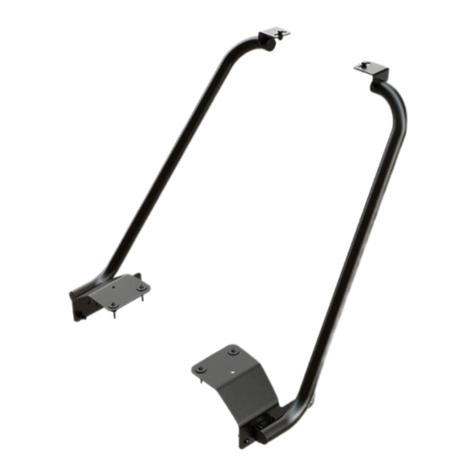
Front Runner
Front Runner FAJL004 quick start guide

Allen Sports
Allen Sports QR520-EB instructions
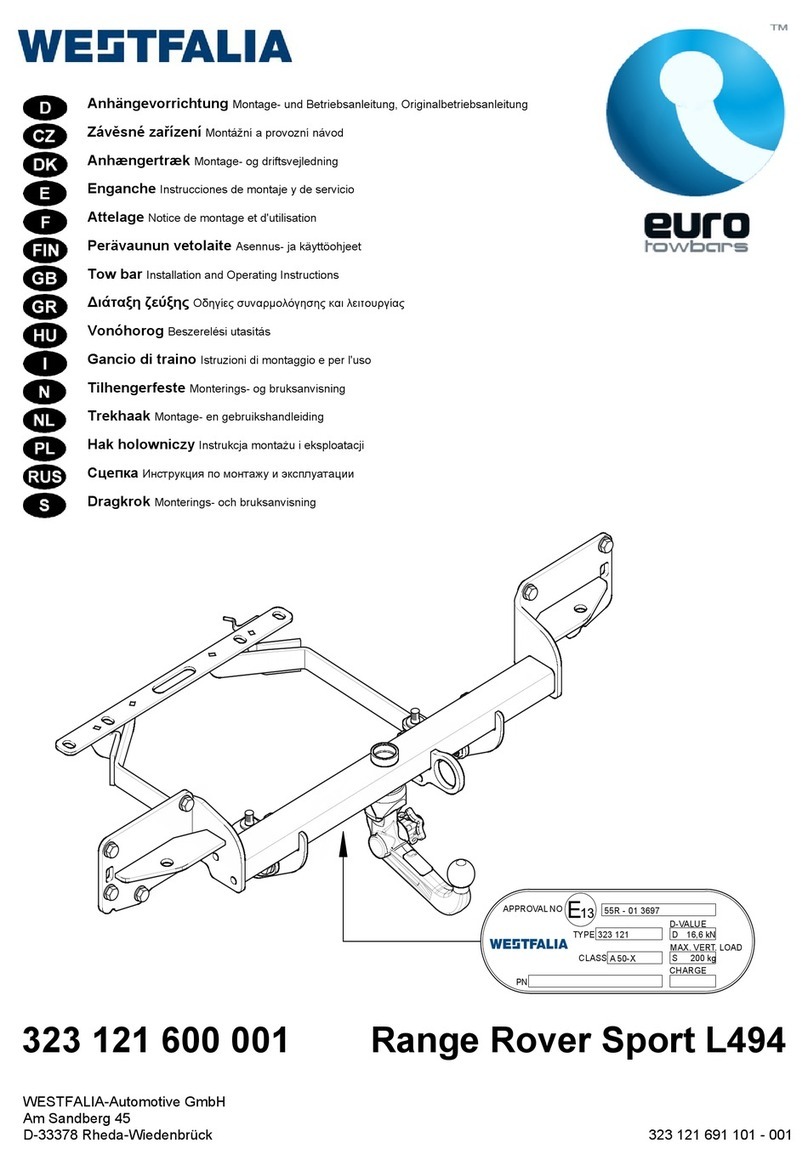
Westfalia
Westfalia euro towbars 323 121 600 001 Installation and operating instructions
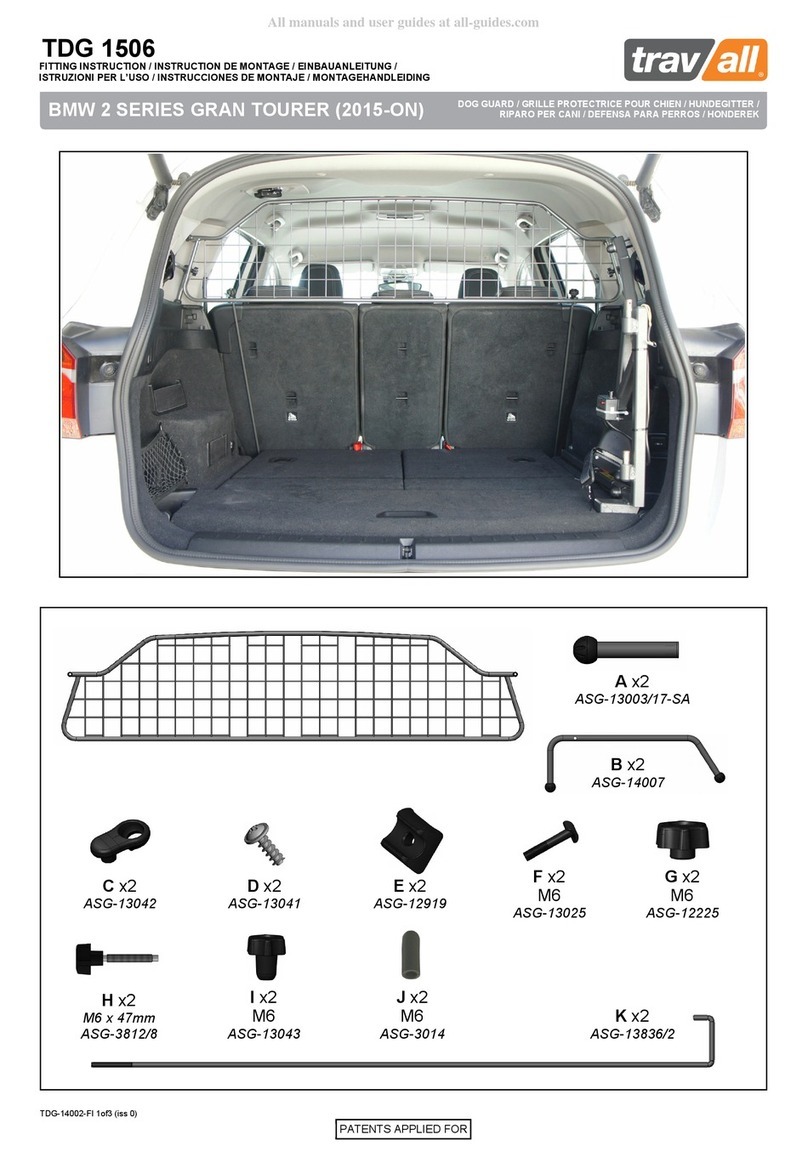
travall
travall TDG 1506 FITTING INSTRUCTION
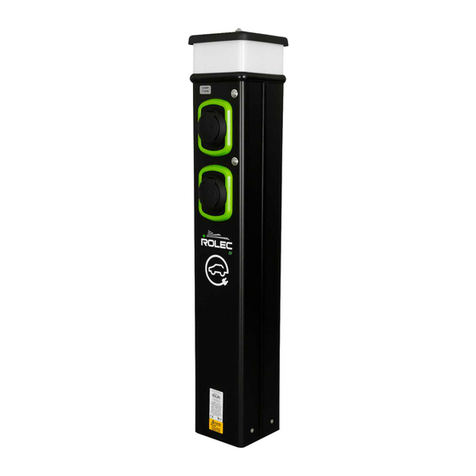
ROLEC
ROLEC EV Series installation instructions
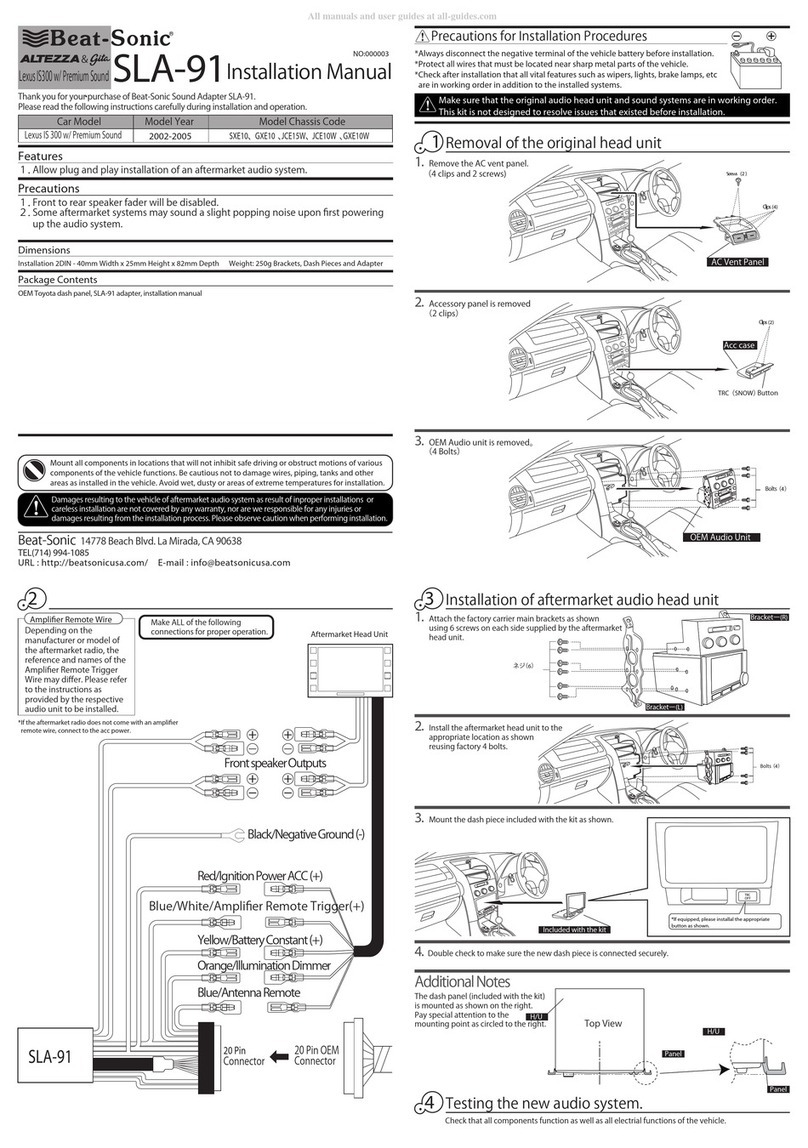
Beat-Sonic
Beat-Sonic Altezza & Gita SLA-91 installation manual


